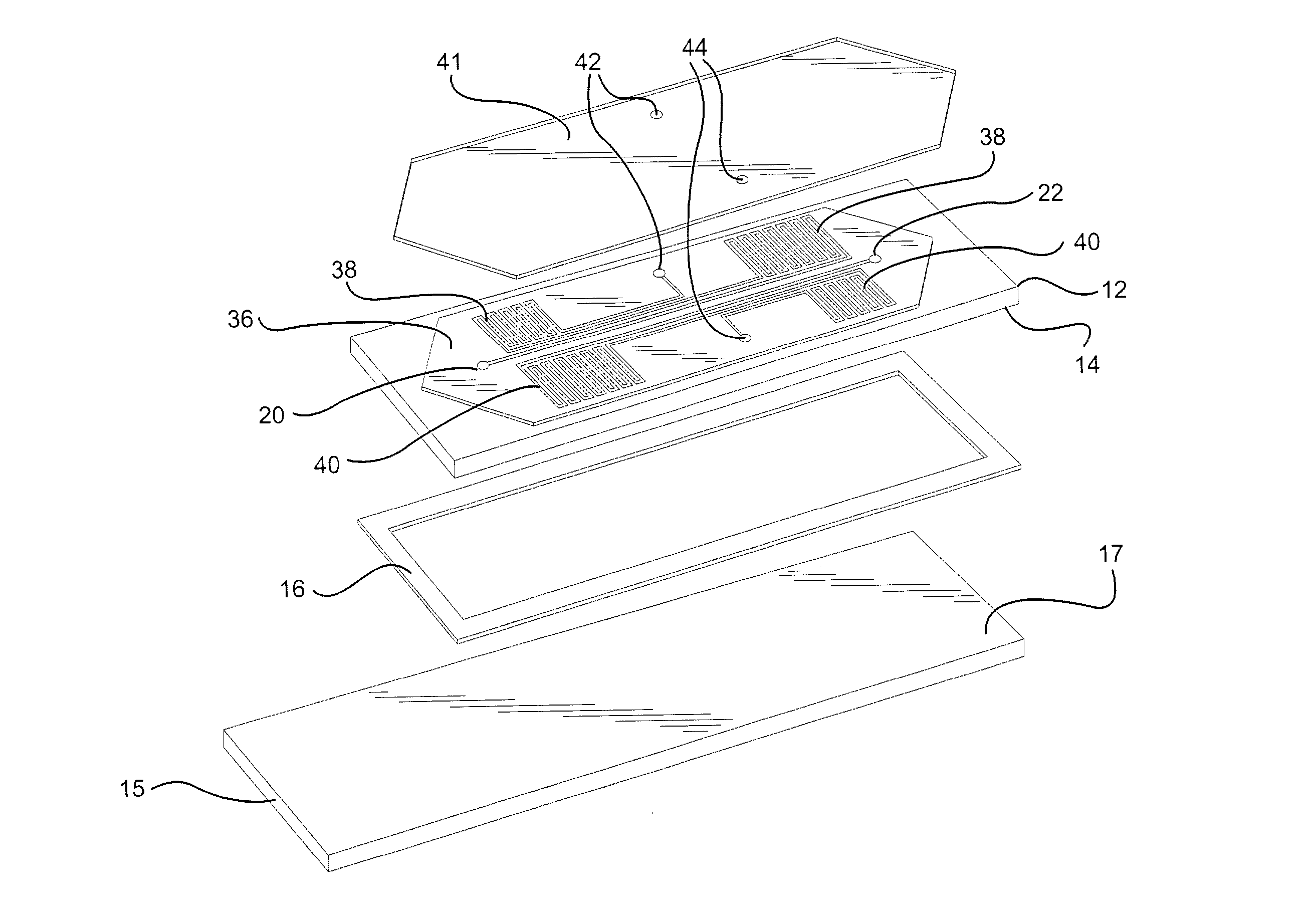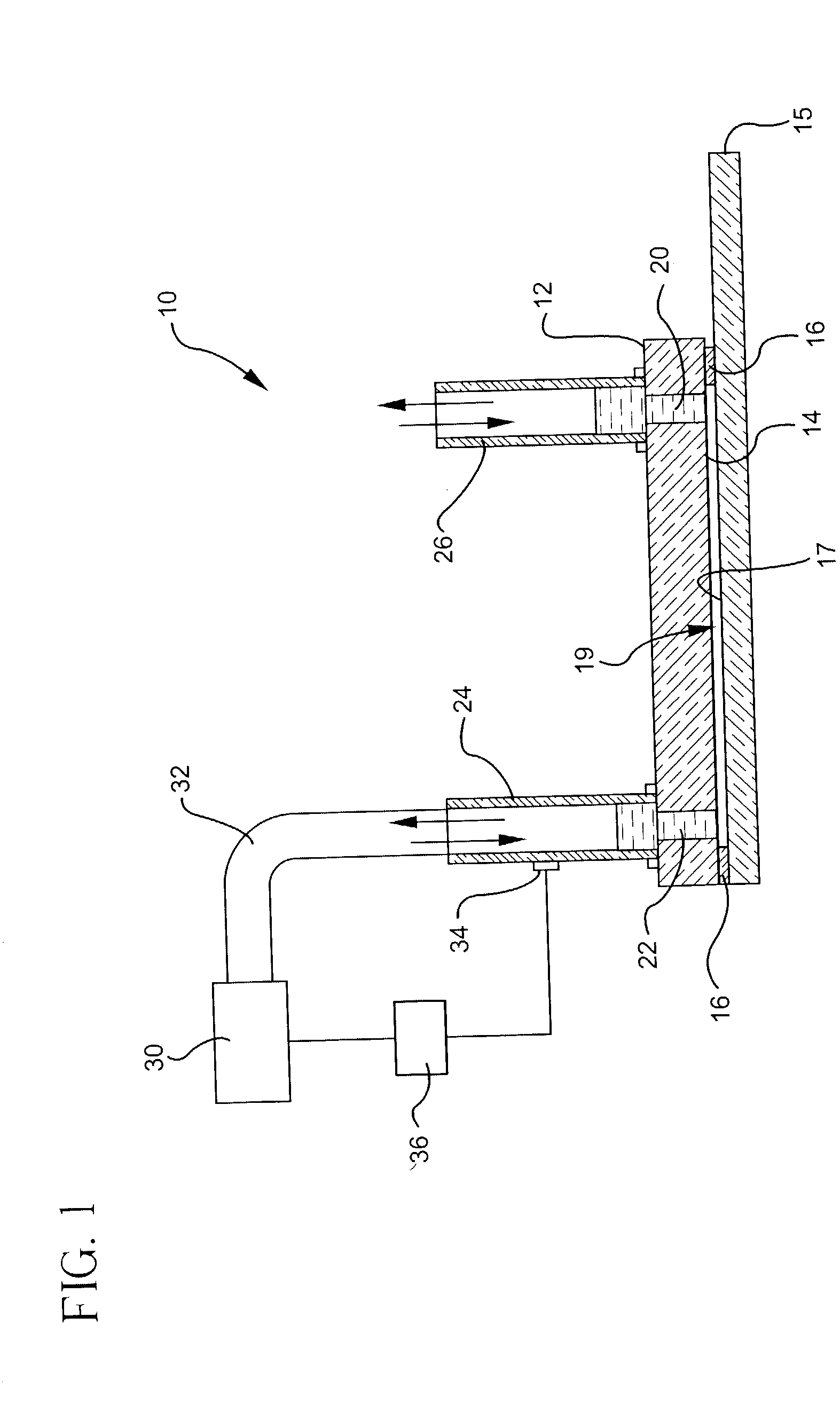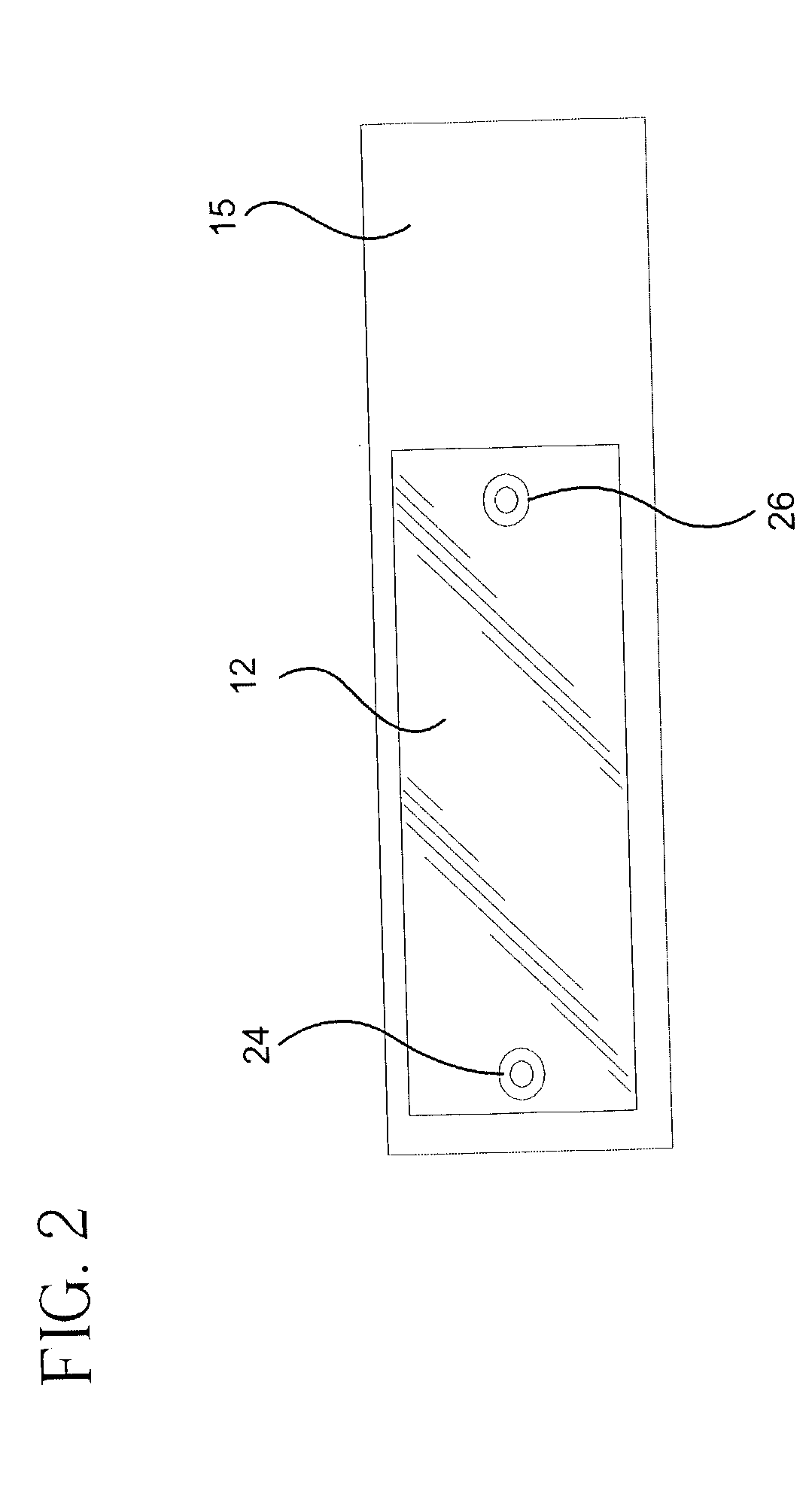Microvolume biochemical reaction chamber
- Summary
- Abstract
- Description
- Claims
- Application Information
AI Technical Summary
Benefits of technology
Problems solved by technology
Method used
Image
Examples
Embodiment Construction
[0048] Preparation of Target Solutions and Immobilized Probes
[0049] Double stranded DNA of each human gene in Table 1 were first amplified by the polymerase chain reaction (PCR). PCR products were then purified with the Qiagen PCR purification column (Qiagen, Inc., Valencia, Calif.). Purified PCR products of CASP7, CHES1, CYP4F2, CYP4F3, CYP24, RAQ, TNFRSF6, USP5, USP14, and USP15 genes were separately used as a template for printing onto Corning CMT-GAPS.TM. slides in the pattern shown in FIG. 9 or used as template to prepare Cy3 and Cy5 probes. Each product of labeling reaction was mixed in different ratio according to Table 2. Hybridization was done with an equal amount of Cy3 probe for each gene. The equal amount of target DNA (200 ng each for all 10 genes) was mixed and labeled with Cy3. Two ng of Cy3 probe was used for each hybridization (the concentration Cy3 probe of each gene is 200 pg / hyb for Ci). The total 2 ug of Cy3 labeled DNA was enough for 1000 hybridizations.
1TABLE ...
PUM
| Property | Measurement | Unit |
|---|---|---|
| Length | aaaaa | aaaaa |
| Volume | aaaaa | aaaaa |
| Volume | aaaaa | aaaaa |
Abstract
Description
Claims
Application Information
 Login to View More
Login to View More - R&D
- Intellectual Property
- Life Sciences
- Materials
- Tech Scout
- Unparalleled Data Quality
- Higher Quality Content
- 60% Fewer Hallucinations
Browse by: Latest US Patents, China's latest patents, Technical Efficacy Thesaurus, Application Domain, Technology Topic, Popular Technical Reports.
© 2025 PatSnap. All rights reserved.Legal|Privacy policy|Modern Slavery Act Transparency Statement|Sitemap|About US| Contact US: help@patsnap.com



